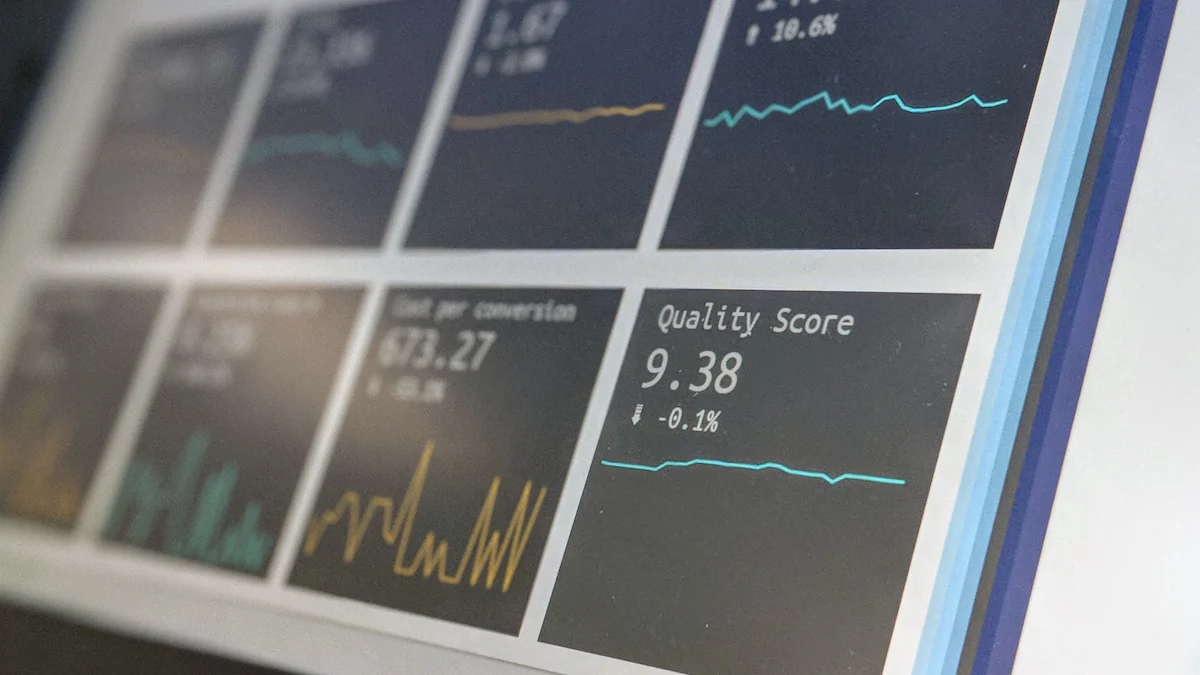How a Sales Funnel Increased My Business Revenue by 200%

Sales Funnel strategies revolutionized my business approach. A well-structured funnel guides potential customers through their buying journey, enhancing conversion rates and boosting revenue. My motivation stemmed from the need to increase efficiency and customer retention. Businesses with aligned sales and marketing funnels see a 36% higher retention rate. The Sales Funnel became essential for my business growth. Implementing this strategy led to a remarkable 200% increase in revenue. The transformation proved the power of a well-defined Sales Funnel.
Understanding the Sales Funnel

Definition and Components of a Sales Funnel
A Sales Funnel transforms potential leads into loyal customers. Each stage of the funnel plays a crucial role in this transformation.
Awareness Stage
The Awareness Stage captures attention. Businesses use targeted marketing strategies to reach potential customers. SEO and personalized content help attract the right audience. Spotify's loyalty program demonstrates success. The company achieved over 40% conversion rates through effective awareness campaigns.
Interest Stage
The Interest Stage engages potential customers. Businesses provide valuable information. Content marketing and email campaigns nurture interest. Dr. Ruth Roberts' e-commerce strategy increased conversions by 50%. Engaging content played a vital role in this achievement.
Decision Stage
The Decision Stage involves evaluating options. Businesses offer comparisons and testimonials. Customers feel confident in their choices. A clear value proposition convinces potential buyers.
Action Stage
The Action Stage finalizes the purchase. An easy checkout process enhances conversions. Multiple payment options simplify transactions. Businesses see increased revenue when customers complete purchases effortlessly.
Types of Sales Funnels
Sales Funnels vary based on business models. Understanding the differences helps tailor strategies effectively.
B2B Sales Funnels
B2B Sales Funnels focus on building relationships. Long sales cycles require nurturing leads. Businesses use webinars and whitepapers to educate prospects. Trust and credibility drive decisions in B2B environments.
B2C Sales Funnels
B2C Sales Funnels emphasize quick conversions. Shorter sales cycles demand immediate engagement. Social media and influencer marketing capture attention. Emotional appeals influence buying decisions in B2C markets.
Implementing a Sales Funnel
Identifying Target Audience
Understanding the target audience forms the foundation of a successful sales funnel. Businesses must know who the potential customers are and what they need. This understanding allows for tailored marketing strategies that resonate with the audience.
Market Research Techniques
Market research provides insights into customer preferences and behaviors. Businesses can use surveys, interviews, and focus groups to gather data. Online tools like Google Analytics reveal website visitor patterns. These techniques help identify trends and opportunities. A well-researched market strategy increases the effectiveness of the sales funnel by up to 20%.
Creating Customer Personas
Customer personas represent ideal customers. Businesses create these personas based on demographic information, interests, and buying habits. Personas guide content creation and marketing efforts. Personalized content engages customers more effectively. A defined persona strategy leads to a 16% higher deal win rate.
Designing the Sales Funnel
Designing a sales funnel involves creating a roadmap for the customer's journey. Each stage must offer value and encourage progression. A clear design enhances conversion rates and boosts revenue.
Content Creation Strategies
Content plays a crucial role in attracting and retaining customers. Businesses should focus on producing engaging and informative content. Blog posts, videos, and infographics capture attention. Interactive content encourages visitor interaction. Effective content strategies increase sales funnel conversions significantly.
Choosing the Right Platforms
Selecting the right platforms ensures content reaches the intended audience. Social media, email marketing, and websites serve as primary channels. Businesses should choose platforms where the target audience spends time. The right platform choice enhances visibility and engagement.
Testing and Optimization of the Sales Funnel
Continuous testing and optimization improve the sales funnel's performance. Businesses must analyze data and make informed adjustments. This process ensures the funnel remains effective and relevant.
A/B Testing Methods
A/B testing compares two versions of a webpage or content. Businesses test different headlines, images, and calls-to-action. This method identifies what resonates best with the audience. A/B testing optimizes conversion rates by revealing effective elements.
Analyzing Funnel Metrics
Analyzing metrics provides insights into funnel performance. Key metrics include conversion rates, bounce rates, and customer acquisition costs. Businesses must regularly review these metrics. Data-driven decisions lead to improved sales funnel efficiency and increased revenue.
Case Study: My Business Transformation

Initial Challenges and Goals
Identifying Revenue Bottlenecks
I faced significant challenges in identifying revenue bottlenecks. Sales stagnated despite increased marketing efforts. Customer feedback indicated dissatisfaction with the purchasing process. I realized that the sales funnel lacked efficiency. A thorough analysis revealed gaps in customer engagement and conversion rates.
Setting Clear Objectives
I set clear objectives to address these issues. The primary goal focused on enhancing customer experience. I aimed to increase conversion rates by 50%. Another objective involved streamlining the checkout process. I prioritized improving customer retention through personalized engagement.
Steps Taken to Implement the Sales Funnel
Tools and Resources Used
I utilized various tools and resources to implement the sales funnel. Marketing automation software streamlined customer interactions. Analytics tools provided insights into customer behavior. I employed content management systems for targeted content delivery. These tools facilitated efficient funnel management.
Timeline and Milestones
The implementation followed a structured timeline. I completed the initial setup within three months. The first milestone involved launching targeted marketing campaigns. The second milestone focused on optimizing the checkout process. I achieved significant progress by the six-month mark. Conversion rates improved, and customer satisfaction increased.
Results and Learnings
Revenue Growth Analysis
The sales funnel led to remarkable revenue growth. I observed a 200% increase in business revenue. Conversion rates exceeded initial targets. Customer feedback highlighted improved satisfaction. The streamlined process contributed to higher sales volumes.
Key Takeaways and Future Plans
The transformation offered valuable insights. A well-structured sales funnel proved essential for business success. Continuous optimization remains crucial for sustained growth. I plan to expand personalized marketing efforts. Future plans include exploring new markets and enhancing customer loyalty programs.
A well-structured sales funnel delivers numerous benefits. Businesses see increased conversion rates and revenue growth. Implementing a sales funnel transforms business operations. I encourage every business owner to adopt this strategy. The sales funnel creates a clear path for customer engagement. Continuous improvement ensures sustained success. Adapting to market changes keeps the sales funnel effective. I believe in the power of a sales funnel for business growth. The journey to optimize sales processes never ends. Embrace the challenge and watch your revenue soar.
